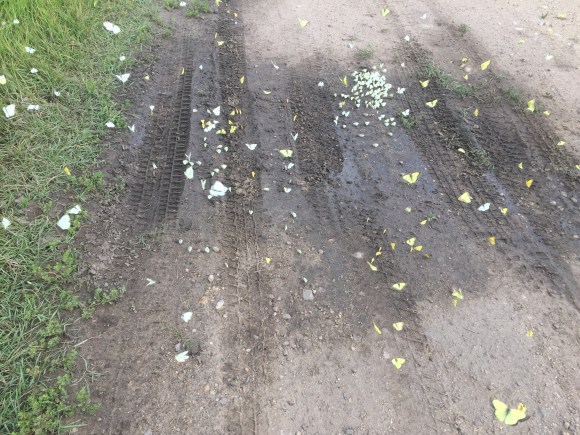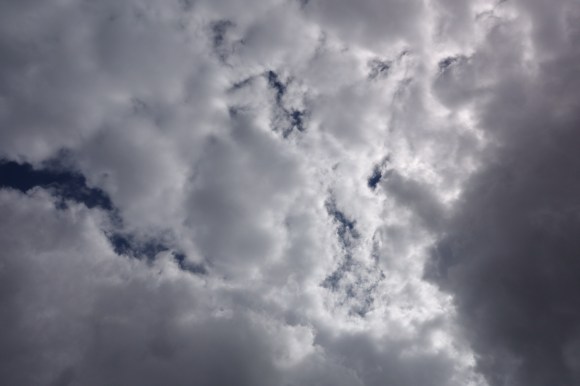
(the following is the impact statement that I wrote for the SK History and Folklore Society, who requested it to forward to their funding agencies. Those of you who have followed the walk in some way may find it worthwhile)
The Swift Current – Battlefords Trail walk certainly affected me personally. In addition I was witness to a number of ways in which it had an impact on communities and individuals we encountered. Firstly, although the historical connection between the Métis community and the Trail is well known, I believe that the linking of our first day’s walk with the Métis celebration in Swift Current solidified that connection. I was touched by the accompanying Red River cart and the members of the Métis community who walked the first steps of the Trail with us. Another community – or set of communities – that now have a greater knowledge of the Trail are the Hutterite colonies that we passed through. Our very positive interactions, especially with the Swift Current Colony meant that the members of the Colony learned something of the history of the Trail that passes through their land. We got the fresh cinnamon buns – they got a history lesson, and some local human geography! Thanks to our Trek organizer and guide Hugh Henry for laying the groundwork here, as he did in every other way.

When we met individual farmers as we walked, the reaction, almost without fail, was the same: interest in what we were doing, and most often, some positive but nostalgic comment about the Trail, almost as if it was a thing that had belonged to a past (perhaps their parents or grandparents’ generation) that they were surprised might still be considered important, but very quickly agreed should be important. In other cases, farmers who hosted us joined the walk briefly, for a day or part of a day, and told us of their own family histories and how they intersected with the histories of the Trail. In most cases their recollections were of the important early settlement history. In a very natural way, those of us who were walkers were able to include the First Nations and Métis aspects of the Trail’s history without in any way belittling the important personal and family histories they were recounting, bringing (I hope) the first steps toward some kind of integration of those histories. In a few cases local farmers joined us in the daily smudges led by one of our Métis walkers, Richard Kotowich.
An important result of such a marathon effort as this trek – and one of my reasons for walking personally – is to reinforce in the public mind, quietly and with respect for landowners, the idea that there do exist, on private land, trails of public importance, which need to be preserved and to which the public should have some limited rights of access. There is no fear, in Saskatchewan, of hordes of trekkers taking to the Battleford Trail! At the same time, the Trail is part of the commonwealth of history, and importantly, for three very different communities: the First Nations, the Métis, and the Settler. I have great respect for the occasional farmer or rancher who decides not to break some of the land that still bears the marks of the carts, for the public good. Our walk was, in a very small way, a call to such civic-mindedness.

We did not plan it this way, but our walk through the Biggar and Battlefords regions coincided with some breaking news about the trial process in the manslaughter charge connected to the death of Coulton Boushie. Whether it was in our minds, or in the air, it did feel as if the tensions increased, both when we stayed on the Mosquito First Nation, and when we passed by farms in the area, many of which were plastered with “No Trespassing” signs we had not seen further south. Perhaps our stay on the Mosquito FN helped those who were there realize that there are many Settlers who are trying to reach out and to learn from them; I hope so. Perhaps, at the same time, the fact that a group that was primarily of Euro-Canadian background sought to be guests on the Reserve helped some of the non-Indigenous folks we encountered in that area realize that the two solitudes can perhaps be bridged by folks of good-will on both sides. The matter, of course, is more complex than a single group of walkers might influence, but I hope that we were, if nothing else, a living sign of what the very first steps in seeking reconciliation might look like.
Finally, the Trail walk was important to me personally. When I grew up in the Swift Current and Simmie regions of the south-west corner of Saskatchewan, we learned about the “Indians”, as we called them then. If we thought of them at all, it was as important people who no longer lived anywhere close to us. No one – including me – ever seemed to wonder why the First Nations no longer ranged over those areas. I only learned much later, as an adult, that many, including Big Bear’s Plains Cree, sought Treaty lands exactly where I grew up, but were pushed north, often starving and in poor clothing, during the winter, by the policies of the Dominion government and the railroad. Walking this Battleford Trail, generally in comfort with more than enough food and a good tent or occasionally a hotel room, we were walking the Trail that they once walked, starving, not much more than a century and a quarter ago.

Thanks to Hugh Henry, Harold Steppuhn, Ken Wilson and local farmers, the trek taught me the geography of the land where I was raised. I learned about the “Eagle Hills”, the “Bear Hills” and the “Bad Hills”, about NWMP outposts and glacial moraines and ancient inland seas, about soil formations and water drainage, about poplar trees and prairie grasses. Such learnings, added to my first visits to communities like Sanctuary, Greenan and Herschel, and made in the company of other pilgrims who became like family, made it a very rich three weeks. I blogged about the Trail and had hundreds of reads of my blog posts, both in Canada and internationally. Thanks to the Saskatchewan Historical and Folklore Society, and especially to my friend and co-walker Hugh Henry, for making this walk possible.
















